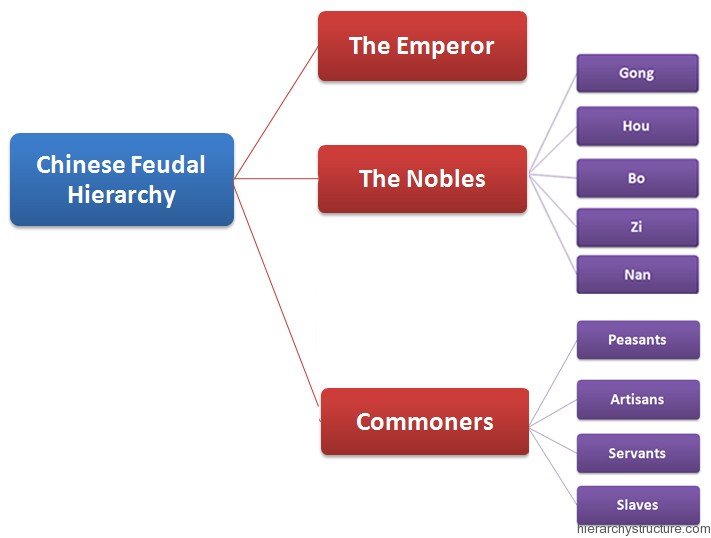Chinese feudal hierarchy was quite similar to the British feudal hierarchy. China witnessed the evolution of feudalism between the eras of 1122 BC to 256 BC in the ruling period from the Zhou dynasty to the Qin dynasty.
When the king Fa of Zhou dynasty defeated the Shang dynasty’s Yin House, the king created some ranks in the China which further with time took the form of Chinese feudal hierarchy.
The arrangement of ranks, the practices being followed were quite similar to the existing feudal systems in most part of the worlds, but also there were some unique regulations in the Chinese feudal hierarchy. These ranks were Gong, Bo, Hou, Zi and Nan which were equivalent to Duke, Earl/ Count, Marquis, Viscount and Baron in British feudal hierarchy respectively.
The Chinese feudal hierarchy is briefly explained as below:

The Emperor
The person with the utmost power and all the rights in the Chinese feudal hierarchy was the emperor. He was considered the divine son of God and all were bound to abide by him. Wrong or right his decision was the final one and it was countrymen duty to serve their loyalty towards the emperor.
The Nobles
The emperor granted his land to some of his royal authorities which was termed as state and city respectively and in return these nobles were expected to serve the emperor throughout their life. The emperor further categorized these nobles in five sub division which were as follow:
- Gong – The first member of the Chinese nobility, a Gong is equivalent to the duke in British feudal hierarchy. They were a part of Shang royal family. The lord of Song was granted this rank.
- Hou – The member next to the gong in the Chinese nobility was Hou equivalent to marquis in British feudal hierarchy. The lord of Qi was entitled with this rank.
- Bo – The third member of the Chinese nobility was Bo equivalent to the rank of earl in the British feudal hierarchy. The lord of the Qin was granted this royal rank.
- Zi – Next to Bo was the rank Zi which was granted to the lord of Chu. This was equal to the title viscount in British feudal hierarchy.
- Nan–The last one in the nobility was Nan which was equivalent to the rank baron in British feudal hierarchy.
Commoners
The last in the hierarchy were commoners or we can say common men. This category neither possessed any power nor any land and they were totally in the hands of the king and the nobles. This category can be further divided into sub categories which include peasants, servants, artisans and slaves.
- Peasants – The nobles rented their lands to peasants and in return expected some special services.
- Artisans – These were the men who did not take land on rent and opted work like blacksmith, carpenter etc.
- Servants – The people who work in the houses and lands of nobles.
- Slaves – People made slaves in wars or bought to serve for their entire life without getting paid.
